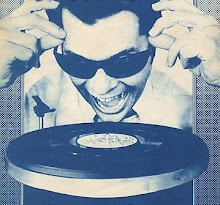 Last weekend we watched The U.S. vs. John Lennon. After the show, I told Joanna another Forrest Gumpian story from my past. No, I didn't teach Elvis his moves, but it's another of those Six Degrees of Separation things that amuse me to no end, especially since the degree of separation—for me, anyway—is usually two or three (four at most).
Last weekend we watched The U.S. vs. John Lennon. After the show, I told Joanna another Forrest Gumpian story from my past. No, I didn't teach Elvis his moves, but it's another of those Six Degrees of Separation things that amuse me to no end, especially since the degree of separation—for me, anyway—is usually two or three (four at most).Walking past the smaller of the two school gynasiums one afternoon in 1968, I heard the coolest music playing from within. I stepped inside and, inquiring of my English teacher, Dave Lundin, learned that I was hearing Upper & Lower Egypt from Pharoah Sanders' Tauhid LP.
More important, Dave told me he was setting up the gym for a be-in, to occur that Saturday night and would I like to participate? Sensing that this was something not to be missed, between the two of us we agreed I'd stage a shadow show during the goings on.
(Only 40 years later did I learn that Dave had been a regular at Wayne State University's infamous Cass Corridor, where he was picking up counterculture influences and importing them to the NW Detroit suburbs for those emulating the Cleaver family in the post-Eisenhower era. About the same time I discovered that Yoko Ono had been an early participant in both Manhattan, then London, be-ins, such as The 14 Hour Technicolour Dream held at the Alexandra Palace to the music of Pink Floyd and Soft Machine. But more on the Yoko connection later.)6/21/09—This just in from John Sinclair, London, England:
Thanks for the warm memories and the
nice post. Dave Lundin, what a great guyLove, John
 At home I dug up all sorts of small treasures for the shadow show which, as it turned out, I performed onstage adjacent to the 10,000 megawatt, 150 decibel, full-on assault of the legendary MC5, followed thereafter by the jazz grooves laid down by the Charles Moore Ensemble. For a good portion of the evening, band manager, poet, musician, Fifth Estate music columnist and White Panther co-founder John Sinclair—attired in vertically striped green and white pants—was prancing around like a leprechaun on an elevated walkway, handing out cinnamon sticks to all those in attendance.
At home I dug up all sorts of small treasures for the shadow show which, as it turned out, I performed onstage adjacent to the 10,000 megawatt, 150 decibel, full-on assault of the legendary MC5, followed thereafter by the jazz grooves laid down by the Charles Moore Ensemble. For a good portion of the evening, band manager, poet, musician, Fifth Estate music columnist and White Panther co-founder John Sinclair—attired in vertically striped green and white pants—was prancing around like a leprechaun on an elevated walkway, handing out cinnamon sticks to all those in attendance.Facing a ten-year sentence, Sinclair was shortly sent to the Michigan State Penitentiary for possession of three joints. After first talking to Lundin about the idea, I wrote to Sinclair and received a very nice reply shortly thereafter. He was obviously very happy to hear from anybody on the outside. Too bad I didn't save his letter!
Two years later "the stars aligned" for the John Sinclair Freedom Rally at Ann Arbor's Crisler Arena. Having been involved on the fringe of radical politics in the U.S. for some time, organizers were able to enlist the aide of none other than that other John—late of Beatles fame—along with his ever-present other half, Yoko Ono. Also about this time Lennon had recorded the song, John Sinclair, released on his Some Time in New York City album. Sinclair was freed and the city of Ann Arbor soon reduced the fine for smoking marajuana to a paltry five dollars."The people at Woodstock really were a bunch of hypocrites
claiming a cosmic revolution... while John Sinclair
rotted in jail after a trumped-up drug bust."Pete Townshend, from The Road to Woodstock by Michael
Lang with Holly George-Warren, Ecco/HarperCollins, © 2009



